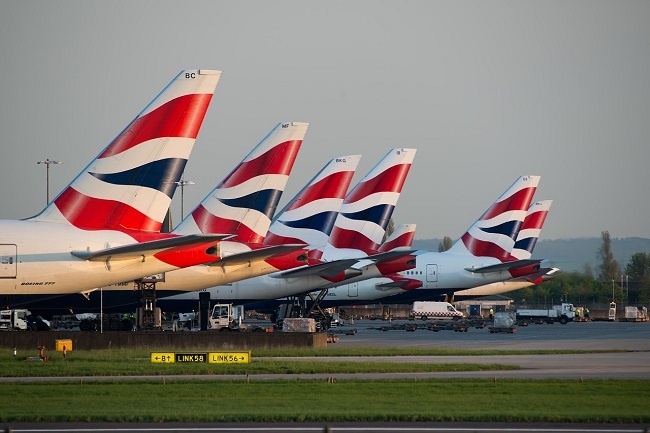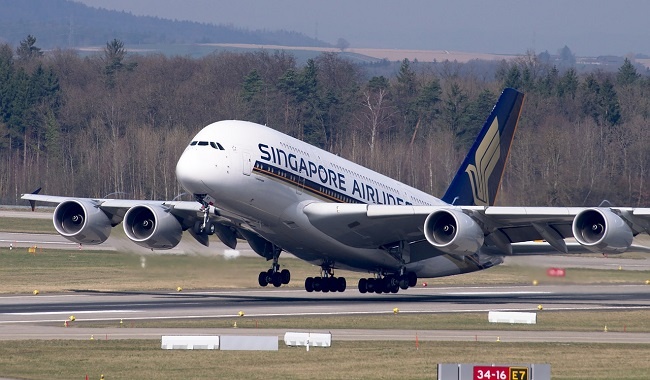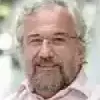CANSFORD LABS
Drug testing for pilots: The rules that are enforced around the world
on Feb 5, 2020
Think “airline pilots”, and a number of adjectives may spring to mind: reliable, trustworthy, calm and methodical being just a few. “Intoxicated” may not be the first word that you think of, but in 2016, FAA figures revealed that one pilot a month failed a drug or alcohol test over the preceding five years.
The issue remains a problem – cue reports of a Singapore Airlines pilot who failed a random test in Australia in September 2018, and - closer to home - a drunk British Airways pilot hauled from the cockpit at Gatwick Airport in January 2018.
All over the world, aviation authorities enforce regulations on drug and alcohol use amongst pilots and other aviation staff. But different countries and airlines approach drug and alcohol testing for pilots in different ways, with no industry consensus on exactly what should be done.
There's traditionally been an unofficial 8-hour “bottle to throttle” rule among pilots, avoiding alcohol for at least 8 hours before they fly. This time-based calculation, however, could still allow low levels of alcohol to remain in the system, depending on the amount consumed and other factors.
So what are some of the alcohol and drug tests for pilots currently in operation, and how strictly are they enforced?
North America - Drug testing for pilots in the USA:
- Mandatory pre-testing
- Random drug and alcohol testing, with minimum rates variable
- Questionable testing methods
In the United States, any employees performing “safety-sensitive functions” must register a blood alcohol concentration of 0.04 or less - and this applies in the mandatory pre-testing of new employees too. Pre-employment drug testing is also in place, requiring a verified negative drug test result for “marijuana, cocaine, opiates, phencyclidine (PCP), and amphetamines, or a metabolite of those drugs in the individual's system”. Opioids were added to the list in 2017.
Random alcohol testing
Rather than testing every crew member pre-flight, Title 14 of the Electronic Code of Federal Regulations states that employers should conduct random alcohol testing amongst a minimum of 25% of those in safety-sensitive functions, and random drug testing amongst a minimum of 50%. The minimum annual percentage is published in the Federal Register each year, and depends on the industry positive rate the year before. It’s up to individual airlines to choose a scientifically valid sampling method - and how the testing itself is conducted is their choice.
- You may like: Workplace drug testing programmes: Key considerations
Not without its problems
Airlines in the US tend to take the urine analysis route, but this is not without its problems. Delta, for example, has come under fire in previous years for firing employees who did not test positive for drug use. Hair testing would give a longer-term view of drug use, highlighting not only whether a pilot has taken drugs, but whether this is a longstanding problem. It could also appease the Air Line Pilots Association, which questions the accuracy and expense of existing tests.
Drug testing for pilots - in Canada
- No alcohol for eight hours pre-flight
- Guidelines and framework for testing have been created
- No regulated testing requirement as yet
In December 2017, a Sunwing Airlines pilot was escorted off a plane after appearing to pass out in the cockpit, and was subsequently jailed for eight months for having control of an aircraft with a blood alcohol level of three times the legal limit.
In Canada, aviation regulations prohibit pilots from flying if they have consumed alcohol within eight hours of the flight - but for some airlines, like Sunwing, this limit is 12 hours. However, while guidelines and a framework for drug and alcohol testing has been created by Transport Canada, airlines are currently left to self-police.
No regulated drug-and alcohol-testing requirement
The country’s Transport Safety Board is quoted as saying, “At present, there is no regulated drug-and alcohol-testing requirement in place in the Canadian aviation industry…While current laws, regulations, standards, and guidance may be effective at mitigating some of the risks associated with substance use among pilots and others in safety-sensitive transportation functions, there continue to be occurrences in which impaired personnel were not identified, or were not prevented from operating an aircraft.”
And while there have been calls for mandatory testing, random testing would be a violation of Canada’s Charter of Rights and Freedoms.
Europe - Drug testing for pilots in the UK:
- Clear cut-offs set
- Operators determine their own testing methods and substance lists
- No random testing
Part 5 of The Railways and Transport Safety Act 2003 lays out the requirements for drug and alcohol testing in aviation staff, with prescribed alcohol limits as follows:
(a) in the case of breath, 9 microgrammes of alcohol in 100 millilitres,
(b) in the case of blood, 20 milligrammes of alcohol in 100 millilitres, and
(c) in the case of urine, 27 milligrammes of alcohol in 100 millilitres.
These are substantially lower than the limits for UK road vehicle drivers, which stand at 35 microgrammes in 100 millilitres for breath, 80 milligrammes of alcohol in 100 millilitres for blood, and 107 milligrammes in 100 millilitres for urine.
Individual operators are left to determine which drugs and medicines they wish to test for, the frequency of testing, and the method of testing, be it breath, blood, hair or urine.
Different airlines have different approaches
This means that different airlines have different approaches to drug and alcohol testing in the UK. British Airways, for example, tests urine for drugs and breath for alcohol. Workers can be randomly tested in the first six months of employment or if returning to work after rehabilitation, and can also be tested if it is suspected that drugs or alcohol may have caused an accident, or if they are suspected of being under the influence while working.

Other UK airlines’ policies are hard to unearth. Monarch (now defunct) includes questions about drug and alcohol use in its pre-screening questionnaire when hiring, while the majority of airlines mention nothing in their pre-application literature. While a Class 1 medical certificate is required for pilots, this does not include drug and/or alcohol testing.
However, according to an article from The Telegraph from June 2018, not a single British airline employs random testing of pilots, instead relying on ground staff, cabin crew or passengers to report any pilot they believe to be under the influence.
Asia - Drug testing for pilots in India:
- Zero-tolerance policy
- All pilots breathalysed before flying
- This has not stamped out substance misuse
India’s aviation regulator, the Directorate General of Civil Aviation, takes a firm stance on alcohol use amongst crew members. Their guidelines state their blood-alcohol tolerance level is zero on all scheduled flights. They also rule that no member of the crew should have ingested an alcoholic drink, sedative, narcotic, or stimulant drug preparation within 12 hours of take-off or during the flight.
Testing is just as rigorous. The regulator requires that all flight and cabin crew on scheduled flights departing from India are breathalysed pre-flight, while those on scheduled flights originating from outside of India must have a post-flight breathalyser examination when they land.
In theory, this rigorous testing should ensure zero substance abuse on Indian flights - however, between January and September 2018, 10 Indian pilots were found to be under the influence of alcohol when tested.
Drug testing for pilots in Singapore:
- Ten-hour window for alcohol consumption
- No random testing policy
- Impressive statistics - but are they representative?
After a Singapore Airlines pilot failed a pre-flight alcohol test in September 2018, the country’s aviation authority is “reviewing the regulations and procedures to more strongly deter such behaviour”. Current regulations state that pilots must not consume alcohol within ten hours of flying, and must not fly under the influence of psychoactive substances - the maximum penalty is a five-year jail sentence and/or an S$100,000 fine.
The Civil Aviation Authority of Singapore (CAAS) currently has no random testing policy in place, but in 900 ramp inspections since 2013 - where inspectors look for signs of intoxication, among other things - there has not been a single positive result.

Currently, the frequency of these inspections is determined by the confidence the CAAS has in the airline at the time. The statistics are reassuring - but could an increase in testing - or the introduction of random testing - reveal a truer picture?
Drug testing for pilots in Russia:
- No mandatory testing
- Some airlines have a zero-tolerance policy
- Poor safety record - could mandatory testing be on the cards?
Earlier this year, two pilots employed by the country’s budget airline Pobeda were pulled from duty and fired after failing pre-flight sobriety tests. Pobeda were quick to point out that they have an “absolute zero tolerance policy” - although the country as a whole does not have a standard drug and alcohol testing policy in place.
Most Russian airlines do conduct their own pre-flight examinations of pilots and crew members, with paramedics visually assessing whether they believe the individuals to be impaired. If the suspicion is there, blood tests are conducted to ascertain whether there is indeed cause for concern.
Russia has the second highest number of airline fatalities and accidents in the world - a dubious honour that is claimed to be due, in part, to “inefficient and outdated safety regulations and procedures”. An improvement in drug and alcohol testing may be on the cards, though: in 2017 the country’s Transport Ministry proposed amendments to Russia’s Air Code as reported in Pravda, which would see mandatory drug and alcohol tests introduced both before and after flights if accepted.
Drug testing for pilots in Hong Kong:
- Clearly defined guidelines, including specified cut-offs
- However, individual airlines are responsible for setting their own policies.
In Hong Kong, the legal breath alcohol limit for pilots is 2mcg/100ml - compared with 22mcg/100ml for the region’s drivers. And despite a China Airlines pilot registering 3mcg/100ml and subsequently being fired, the president of the Hong Kong Pilots’ Association claims that, “pilot alcohol test failings are not a big problem in the region”.
As with other countries, Hong Kong’s aviation authority creates its guidelines and regulations in accordance with International Civil Aviation Organisation (ICAO) Standards and Recommended Practices (SARP). Airlines, however, are responsible for putting their own policies in place, and since the aforementioned incident, China Airlines have pledged to breath-test every pilot for alcohol.
Hong Kong’s CAD guidelines state that it’s up to the airlines to decide if and how they conduct pre-employment screening and random drug and alcohol testing. Their recommendation is breath testing for alcohol, and urine testing for drugs - although the guidelines state that saliva or hair testing may be used as alternatives. Cut-off levels are also included in these guidelines, and are taken from US figures.
Drug testing for pilots in Indonesia:
- Poor historic safety record down to drugs
- Many positive tests amongst pilots
- Could other countries learn from Indonesia’s new approach?
Indonesia’s airlines have had plenty of bad press in recent years. In early 2017, the chief of the country’s national narcotics agency stated that most of Indonesia’s air accidents were down to pilots using drugs. Also in 2017, it was confirmed that urine testing of two Susi Air pilots had produced positive results for heroin. In June 2017, a Lion Air pilot tested positive for cannabis. Despite all this, though, since mid-2018, all Indonesian carriers - for the first time in several years - have an air safety rating high enough that they have been granted permission to fly legally in EU airspace.
So what is being done to combat the seemingly problematic drug issue amongst pilots?
In January 2018, it was announced that the country’s National Narcotics Agency and Ministry of Transport would ramp up checks on flight crews, with future checks set to involve both nail and hair testing. Despite having the fourth highest population in the world, Indonesia has made drug testing for pilots the responsibility of national authorities, rather than individual airlines, and using testing methods that show not only current substance use, but can date back several months: an approach from which the other countries on this list could well benefit.
Drug testing for pilots in Australia/
Australasia:
- Pre-employment and post-accident testing
- Random testing used by some airlines
- Drug testing of oral fluid, alcohol testing of breath
Part 99 of Australia’s Civil Aviation Safety Regulations 1998 lays out the framework for drug and alcohol management plans and substance testing for all those involved in “safety-sensitive aviation activities”.
Testing is conducted before an employee first becomes involved in these safety-sensitive activities, after any serious incidents, and if there are reasonable grounds to suspect drug/alcohol use and when employees return to work after drug-use incidents. There is no requirement in the legislation for random testing, but it is used by some airlines.
Drug testing may only be conducted using oral fluid swabs, while alcohol levels are tested via breathalyser. The breath alcohol limit is set at 0.02 grams per 210 litres of breath.
Individual airlines do set their own limits: Qantas and Jetstar require a zero blood alcohol level for all employees. But with a global pilot shortage set to hit Australia hard in the coming years, it will be interesting to see whether the requirement for thousands of recruits affects drug and alcohol policies.
Africa - Drug testing for pilots in Nigeria:
- Random testing trial recently introduced
- NCAA guidelines require pilots to agree to blood testing
- Substance misuse by pilots on the rise
In 2017, the Nigerian Civil Aviation Authority (NCAA) selected 85 members of aviation staff - including pilots - to be tested for substance misuse. As a result of these urine tests, a pilot with a domestic airline tested positive for THC, and was suspended by the authority.
The tests were conducted in line with NCAA regulations, which state that pilots should not work under the influence of psychoactive substances, and that they must agree to blood tests up to eight hours before or immediately after a flight.
The NCAA has confirmed that this random testing will be continued on a periodic basis, and believe that substance misuse amongst pilots is on the rise. In early 2018, an NCAA presentation revealed 90 sanctions between October 2014 and December 2017 - including 15 pilots - with many of the infractions as a result of drug or alcohol misuse.
No industry consensus
While the percentage of pilots testing positive for drugs and/or alcohol is low, there is no industry consensus on whether testing should be done, when pilots should be tested, and how the testing should be conducted.
An industry standard would improve safety, and make it easier to provide the necessary support for pilots with substance abuse issues, and highlight any potential problems. From a PR viewpoint, standardised testing would also help airlines to avoid negative press, improving consumer confidence in individual airlines, and in the industry as a whole.
And with public sentiment in airlines precariously balanced following a spate of negative press, a focus on rigorous testing might be one step to setting an airline apart from its competitors.
Are you aware of any differences in drug and alcohol testing methodologies across the aviation industry? Let us know!

John Wicks
John Wicks is one of the UK's leading experts in drug testing and has been for over 25 years. He is CEO and co-founder of Cansford Laboratories, a drug and alcohol testing laboratory based in South Wales. John is one of the ‘original expert minds’ who alongside co-founder Dr Lolita Tsanaclis, is responsible for bringing hair testing to the UK.

